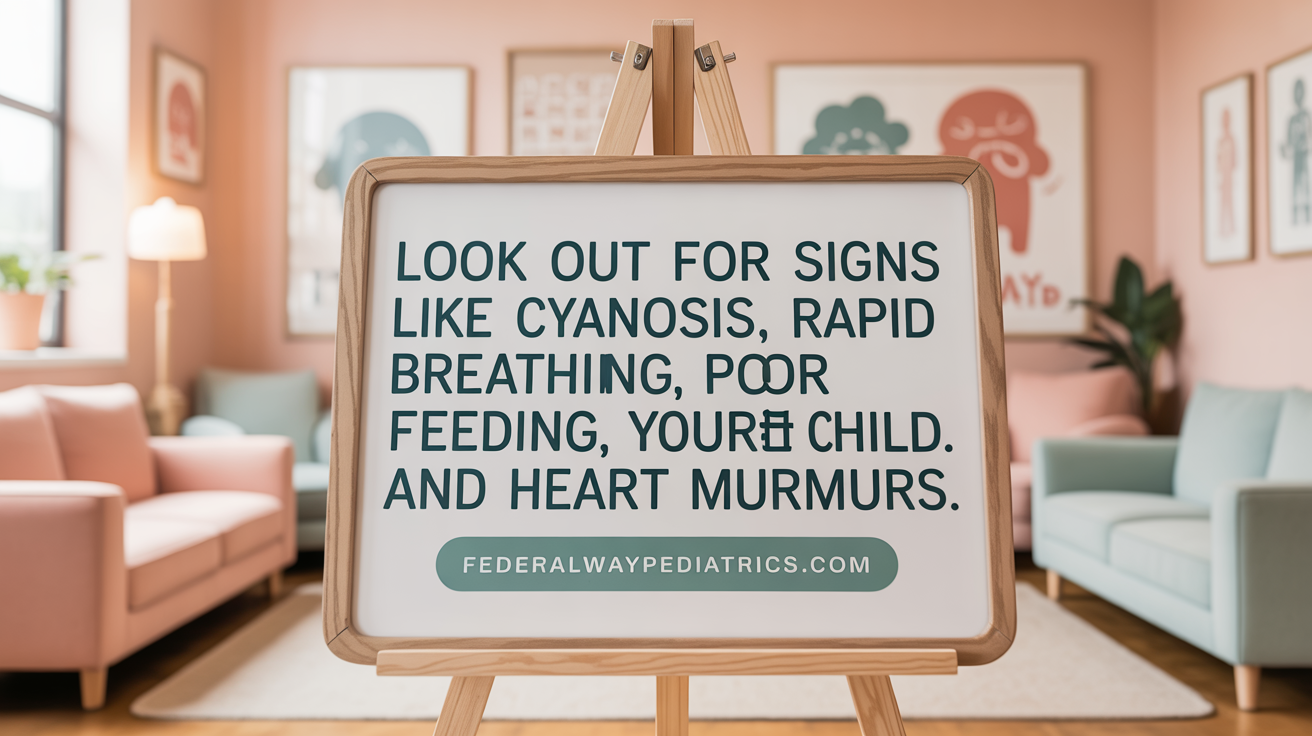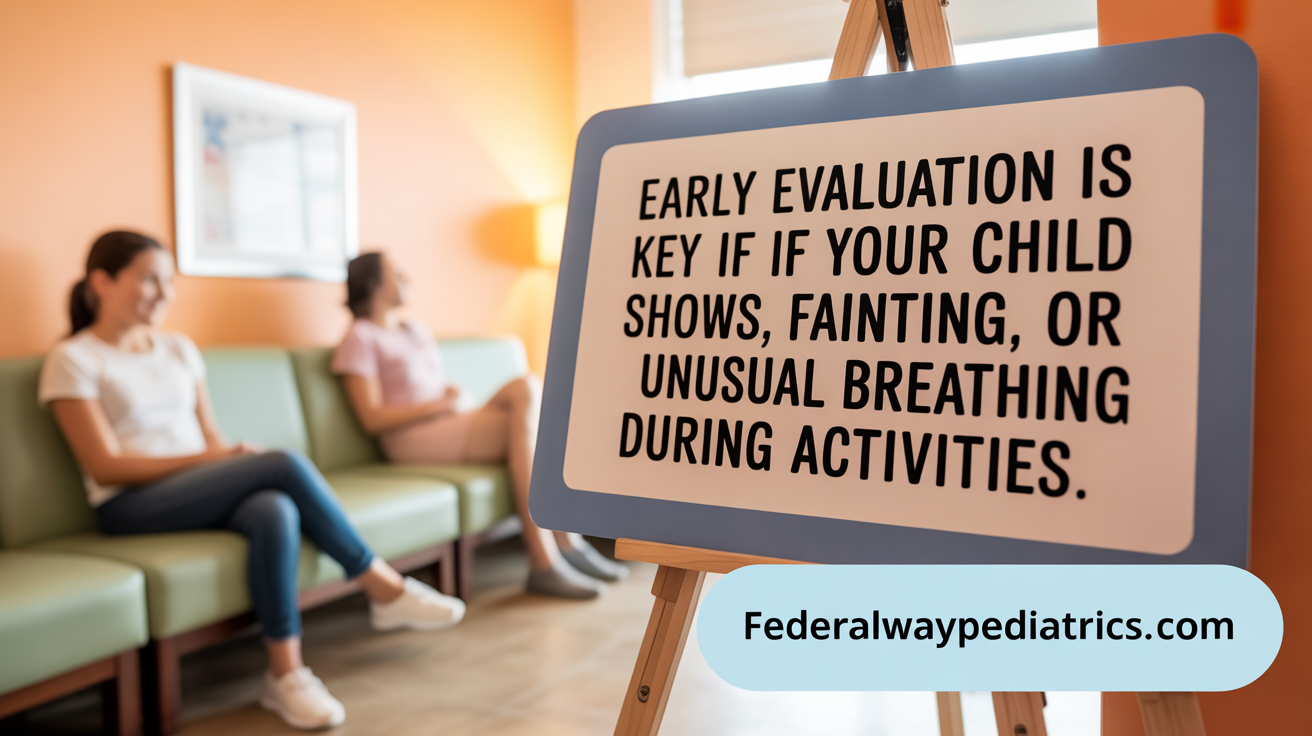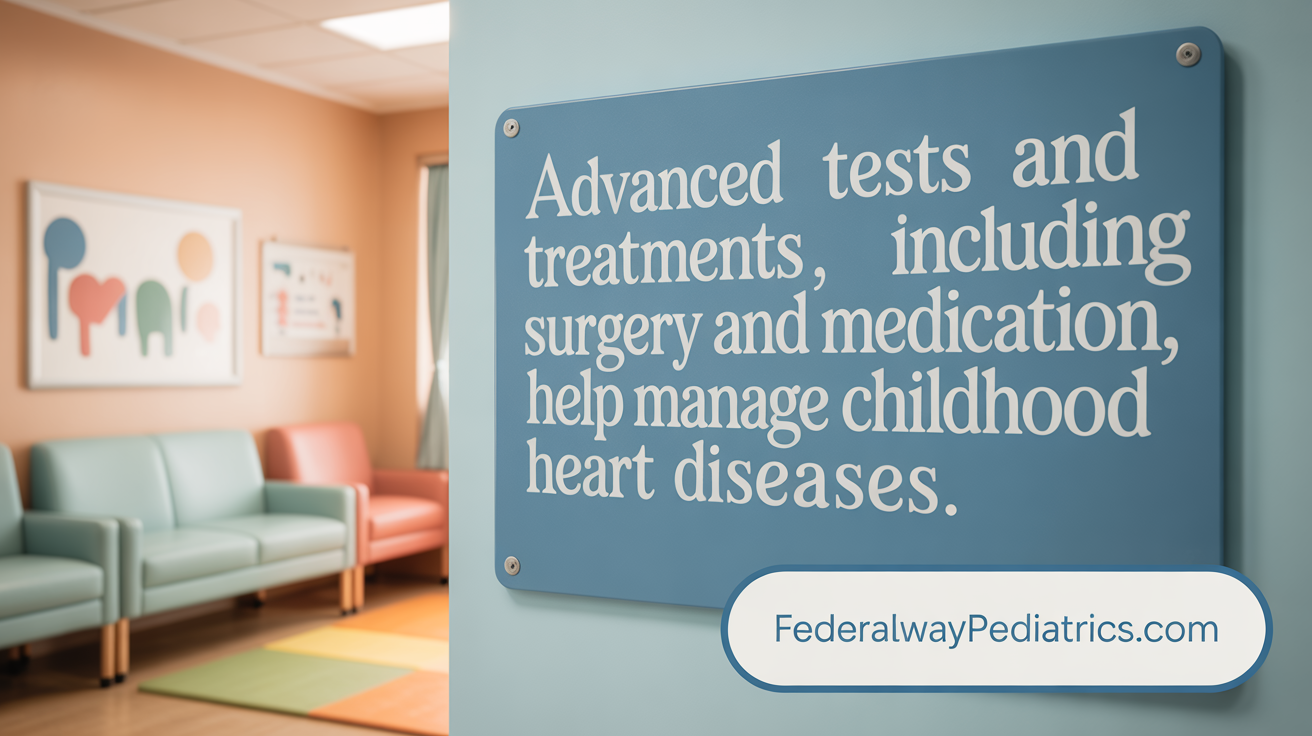Understanding Childhood Heart Health and Its Challenges
Heart disease is often thought of as an adult condition, but many heart issues affect children, including congenital and acquired heart defects. Early recognition of warning signs in children is crucial for timely diagnosis and effective treatment, which can significantly improve health outcomes and quality of life. This article aims to educate parents, caregivers, and healthcare providers on identifying symptoms, understanding diagnostic tools, and knowing when to seek medical evaluation to protect childhood heart health.
Common Warning Signs and Symptoms of Heart Disease in Children
What are common warning signs and symptoms of heart disease in children?
Recognizing early signs of heart problems in children can be life-saving. The most frequently observed warning signs include fatigue, shortness of breath during activity, and a rapid heartbeat or palpitations. These symptoms often indicate that the heart is struggling to pump blood effectively.
In addition to these, children with heart disease may display cyanosis, which is a bluish tint to the lips, tongue, or nail beds caused by insufficient oxygen in the blood. Fainting or dizziness, especially during physical activity, are also red flags for potential heart issues.
Older children might experience chest pain or discomfort during exertion, along with swelling in the legs, abdomen, or eyes, which can be signs of heart failure or other cardiac conditions.
Infants often show symptoms such as difficulty feeding, excessive sweating during feeds, and poor weight gain. These signs reflect the increased effort needed to maintain adequate oxygenation and circulation.
In older children, inability to keep pace with peers, exhaustion after minimal exertion, and recurrent episodes of fatigue might suggest underlying heart problems.
Early detection is crucial. Symptoms like cyanosis, rapid breathing, and poor growth often point to serious congenital defects that might require medical intervention. Conversely, symptoms such as fatigue and swelling can be associated with less severe conditions.
Parents and caregivers should seek medical advice if these symptoms are observed, especially during physical activity or feeding. Timely evaluation allows for appropriate diagnosis and treatment, improving the child's health outlook.
Physical Signs and Symptoms of Congenital Heart Defects in Infants and Children
 Children with congenital heart defects (CHDs) often show specific physical signs that can alert parents and healthcare providers to underlying issues. One of the most noticeable is cyanosis, which is a bluish discoloration of the skin, lips, or nail beds. This occurs when there is insufficient oxygen in the blood and is common in newborns with certain heart defects.
Children with congenital heart defects (CHDs) often show specific physical signs that can alert parents and healthcare providers to underlying issues. One of the most noticeable is cyanosis, which is a bluish discoloration of the skin, lips, or nail beds. This occurs when there is insufficient oxygen in the blood and is common in newborns with certain heart defects.
Rapid or difficult breathing is another common sign, especially during feeding or activity. Infants may tire easily when feeding and show signs of exhaustion, while older children might experience shortness of breath during exercise. These breathing difficulties are often accompanied by poor weight gain and feeding challenges, such as tiring quickly while eating or sweating excessively during feeds.
Heart murmurs are abnormal sounds detected during a routine check-up. These sounds are caused by turbulent blood flow through the heart and can be a sign of structural abnormalities. Besides these, swelling in the extremities like arms, legs, or around the eyes can indicate fluid buildup linked to heart failure.
Other important signs include fainting episodes during exertion, which can point to irregular heart rhythms or inadequate blood flow. Some children may also have visible signs like pale skin and distention of neck veins, which are signs of poor circulation or increased pressure in the heart.
Recognizing these symptoms early and seeking medical evaluation is crucial for diagnosing and managing congenital heart defects effectively. Early intervention can significantly improve a child's health outcomes.
Recognizing Symptoms of Heart Valve Disease in Children

What symptoms might indicate heart valve problems in children?
Children with heart valve issues often show signs that affect their ability to breathe, eat, and grow normally. Common symptoms include difficulty feeding and poor weight gain, which may come with excessive sweating during feeds. These early signs are especially important to watch for in infants.
Bright blue discoloration of the lips, fingers, or toes—known as cyanosis—is another significant indicator, revealing insufficient oxygen in the blood. During physical activity, children might experience fatigue and shortness of breath, struggling to keep up with peers.
Dizziness, lightheadedness, and episodes of fainting are additional symptoms that could signal a problem with the heart valves. Some children may also feel palpitations or chest pain.
Physical examinations might uncover a heart murmur, an abnormal whooshing sound during a heartbeat, which often suggests valve abnormalities. To confirm a diagnosis, healthcare providers use tests such as echocardiography and other advanced imaging techniques.
Knowing these signs and seeking prompt medical attention can lead to early diagnosis and treatment, helping children maintain a healthier, more active life.
Why is medical evaluation crucial?
Detecting valve problems early through thorough examination and imaging allows for timely treatment, including medication or surgical procedures. Managing heart valve issues effectively reduces the risk of complications like heart failure or permanent damage.
Regular check-ups and attention to symptoms like difficulty breathing during activity or feeding can make a significant difference in a child's health outcome.
This awareness and prompt intervention safeguard children’s well-being and enable them to lead active, healthy lives despite heart valve conditions.
Knowing When to Seek Medical Evaluation: Guidance for Parents and Caregivers
 Parents and caregivers play a crucial role in recognizing signs that indicate their child may have a heart problem. If your child shows persistent fatigue, difficulty breathing, or poor growth, it is important to schedule a medical assessment. Symptoms such as chest pain during physical activity, fainting episodes, or dizziness are often red flags that require prompt evaluation.
Parents and caregivers play a crucial role in recognizing signs that indicate their child may have a heart problem. If your child shows persistent fatigue, difficulty breathing, or poor growth, it is important to schedule a medical assessment. Symptoms such as chest pain during physical activity, fainting episodes, or dizziness are often red flags that require prompt evaluation.
Infants with trouble gaining weight, bluish skin (cyanosis), rapid or labored breathing, or excessive sweating during feeds should be seen by a healthcare professional quickly. Similarly, older children and teens experiencing fainting spells, racing or irregular heartbeats, or chest pain during exertion should undergo medical review.
Early diagnosis through a pediatric cardiology evaluation can include tests like electrocardiograms (ECGs) or echocardiograms, which help identify underlying problems. These assessments are essential because some heart conditions may be silent or mistaken for other illnesses.
It’s also important to differentiate between cardiac and non-cardiac causes of symptoms. For example, chest pain caused by muscle strain or anxiety generally needs different management than that caused by heart defects. Fainting spells, especially during exertion, require careful assessment to rule out potentially dangerous arrhythmias or structural issues.
Routine wellness exams are a vital opportunity for early detection. During these visits, healthcare providers routinely check blood pressure, listen for abnormal heart sounds, and may perform additional tests if there’s a family history of heart disease or previous concerns.
Family history is significant; children with relatives who have congenital heart defects, sudden unexplained death, or inherited conditions like long QT syndrome should be monitored more closely. Awareness of these risks can prompt earlier screening and intervention.
In conclusion, parents and caregivers should stay alert to symptoms such as fatigue, fainting, chest pain, or breathing difficulties, and seek medical evaluation promptly. Early intervention can help prevent severe complications and promote healthier outcomes for children with heart conditions.
Diagnostic and Treatment Options for Childhood Heart Conditions

What diagnostic and treatment options are available for childhood heart conditions?
Diagnosing heart problems in children involves a variety of tools and procedures. Healthcare providers typically start with a thorough physical exam and then use non-invasive tests such as echocardiography—an ultrasound that shows the heart's structure and function—and electrocardiograms (ECG), which record the heart's electrical activity. Chest X-rays can reveal heart size and shape, while magnetic resonance imaging (MRI) offers detailed images of the heart tissue.
In some cases, doctors may perform cardiac catheterization. This procedure involves inserting a thin tube into a blood vessel to reach the heart, allowing for detailed assessment and potential repair of defects.
Fetal ultrasounds are used prenatally to detect congenital heart defects before birth. Pulse oximetry, a simple test to measure oxygen levels, can indicate issues with oxygenation in newborns.
Once diagnosed, treatment depends on the specific condition and its severity. Common options include medications such as blood pressure regulators, diuretics, and anti-arrhythmics to control symptoms and stabilize the heart.
Minimally invasive techniques, especially catheter-based interventions, are increasingly used to repair certain defects like atrial septal defects or patent ductus arteriosus. These procedures involve inserting small devices through blood vessels, reducing recovery time and scarring.
For more complex cases, open-heart surgery may be necessary. This can involve repairing or replacing heart valves, closing septal defects, or other corrective procedures.
In severe situations, children with significant heart damage might need a heart transplant. Advances in surgical techniques and postoperative care have improved outcomes for this last-resort option.
Recent developments have also introduced minimally invasive intervention cardiology, which uses catheter-based procedures to reduce risks and improve recovery.
Lifelong management is crucial. Children with congenital or acquired heart conditions need regular follow-up with pediatric cardiologists to monitor their health, adjust treatments, and intervene early if new problems arise.
In summary, the combination of advanced diagnostics and a range of treatment options significantly improves the prognosis for children with heart conditions, enabling many to enjoy healthy, active lives.
Understanding Acquired Heart Diseases and Risk Factors in Children

What are common types of acquired heart diseases in children?
Children can develop heart problems after birth, known as acquired heart diseases. The most notable include Kawasaki disease, cardiomyopathy, and myocarditis.
Kawasaki disease causes inflammation of blood vessels and can damage coronary arteries, increasing the risk of aneurysms. It typically affects children under five and requires prompt treatment.
Cardiomyopathy involves deterioration of the heart muscle, which can lead to weakened pumping ability and heart failure. Symptoms might include fatigue, rapid breathing, or irregular heartbeats.
Myocarditis is inflammation of the heart muscle caused by viral infections. It can impair heart function and sometimes lead to sudden cardiac arrest.
What are the risk factors for childhood heart diseases?
Risk factors include genetic predispositions, family history of heart problems, and lifestyle choices.
Genetics play a significant role; children with relatives who experienced early heart disease, arrhythmias, or sudden unexplained death are at higher risk.
Family history of conditions like Long QT syndrome or congenital heart defects also increases susceptibility.
Lifestyle factors such as poor diet, inactivity, smoking exposure, and stress contribute to the development of acquired conditions.
Unhealthy lifestyle habits can accelerate disease progression and complicate management.
What warning signs should parents and caregivers watch for?
Parents should be vigilant about symptoms like chest pain, palpitations (racing or pounding heart), and fainting, especially during activity.
Other signs include fatigue, dizziness, irregular heartbeat sounds, poor feeding in infants, limited growth, and developmental delays.
Rapid breathing, bluish skin, swelling, or excessive sweating during feeds are also concerning.
Fainting, particularly after exertion, can indicate underlying heart issues and warrants immediate medical evaluation.
Why is early awareness and prevention important?
Early detection of heart problems through routine checks can prevent severe complications, including heart failure and sudden death.
Recognizing warning signs early allows for timely medical interventions, such as medication or procedures, improving the child's quality of life.
Prevention strategies focus on lifestyle modifications, family screening, and timely medical evaluations.
How can healthy habits reduce the risk?
Promoting a diet rich in fruits, vegetables, whole grains, and lean proteins supports heart health.
Encouraging regular physical activity and limiting sedentary behaviors like screen time helps maintain a healthy weight and blood pressure.
Avoiding smoking exposure and managing stress are also crucial.
By fostering these habits from a young age, parents can significantly lower the likelihood of developing acquired heart diseases.
| Aspect | Details | Additional Notes |
|---|---|---|
| Common acquired diseases | Kawasaki disease, cardiomyopathy, myocarditis | Usually diagnosed through clinical signs and diagnostic tests |
| Major risk factors | Genetics, lifestyle, family history | Lifestyle includes diet, activity levels, and exposure to toxins |
| Warning signs | Chest pain, palpitations, fainting, fatigue, breathlessness | Prompt evaluation is vital to prevent complications |
| Prevention strategies | Healthy eating, regular exercise, avoiding smoking | Involves family education and routine screenings |
Understanding these aspects helps in timely recognition and effective management of acquired heart conditions in children.
Promoting Awareness and Early Action for Childhood Heart Health
Recognizing the warning signs and symptoms of heart disease in children is essential for parents, caregivers, and healthcare providers. By understanding the physical indicators, knowing when to seek medical evaluation, and being aware of diagnostic and treatment options, families can take proactive steps to safeguard their child's heart health. Early detection, combined with advances in medical care, offers children with heart conditions the opportunity to lead longer, healthier lives. Additionally, promoting healthy lifestyle habits and awareness of acquired heart disease risks can further protect children from heart complications. Continuous education and vigilance remain key in ensuring every child's heart receives the care it needs.
References
- Signs your infant may have an undiagnosed heart defect
- Three ways to recognize a heart problem in your child - UT Physicians
- Symptoms that Might Indicate a Heart Problem | Children's Hospital ...
- Understanding Pediatric Heart Issues: Early Detection & Expert Care
- How to Know if Your Child Might Have Heart Issues
- Pediatric Heart Conditions: More Common than Parents Would Think
- Signs and Symptoms of Pediatric Heart Issues: A Parent's Checklist
